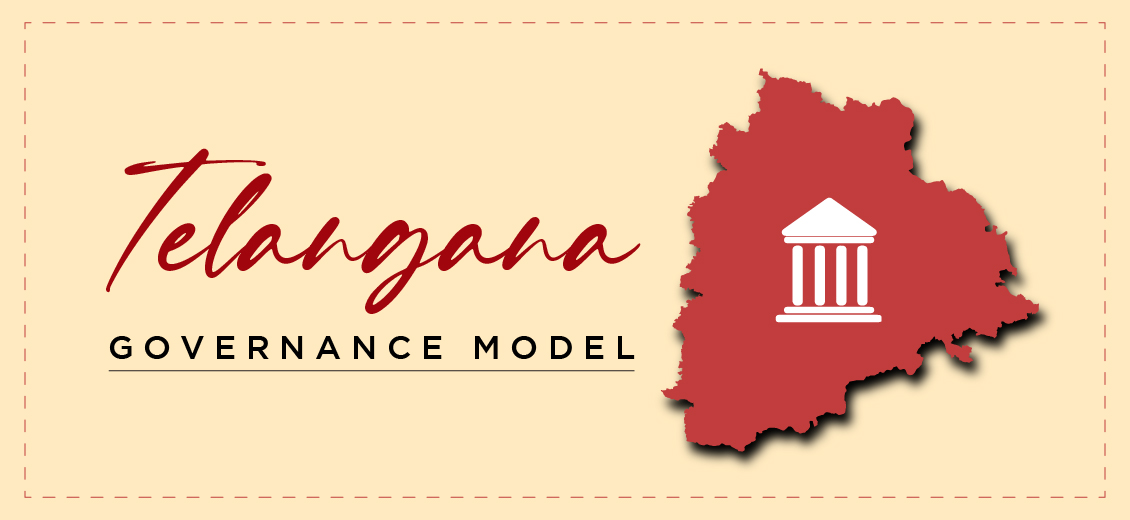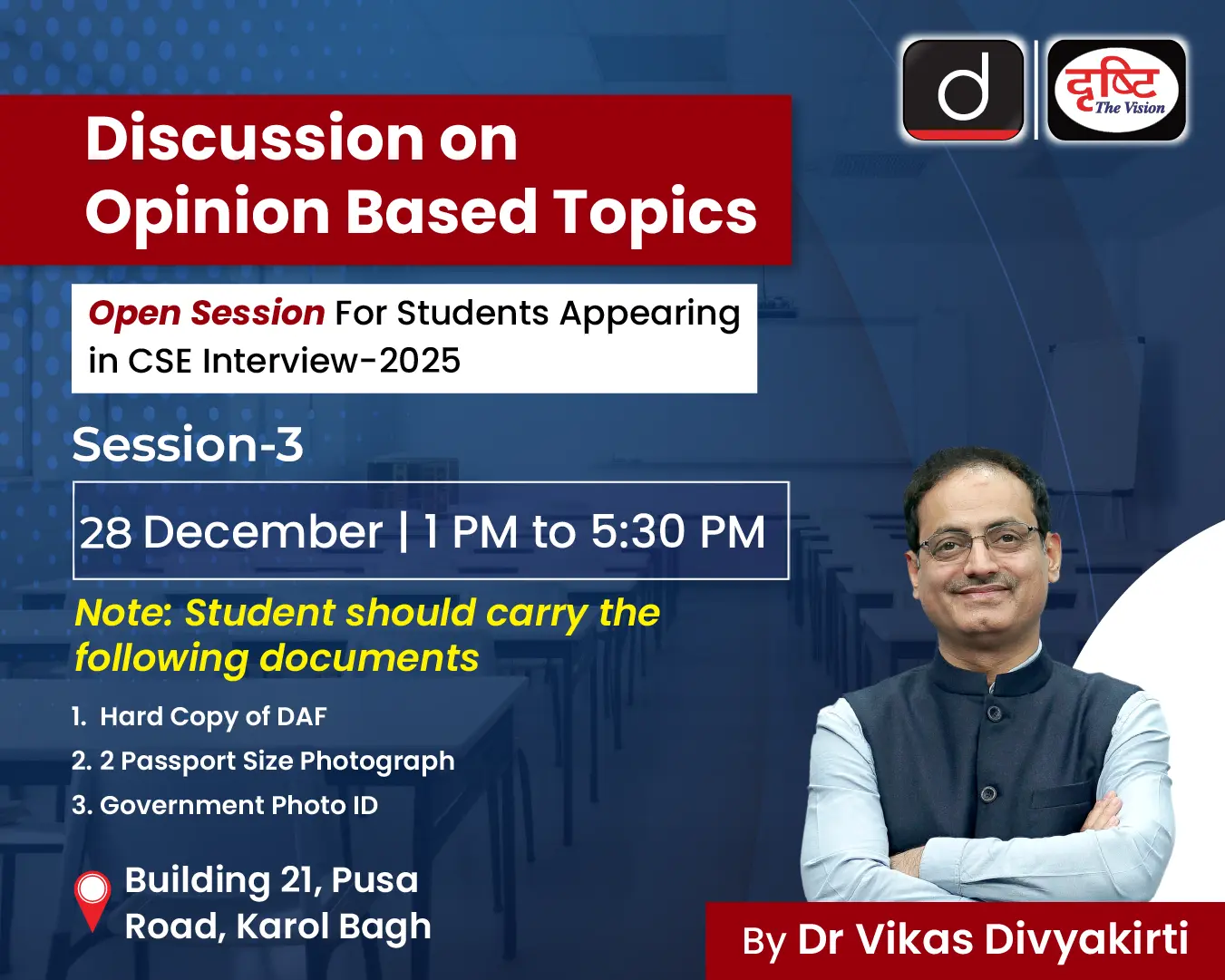Telangana’s Governance Model
Blogs Home
- 29 Jun 2023

“ An inch of movement is better than a mile of intention.”
The quote, inspired by the founder of Taoism, Lao Tzu, talks volumes about the journey of Telangana into an independent state of the Republic of India. As the state completes almost a decade of its formation, with its 9th formation day this year (on the 2nd June, 2023), the chronicle that follows briefly and critically analyses the nature of the newly formed state of Telangana in multifaceted dimensions. At the entre of this analysis lie the socio-political and economic aspects of state functioning, ranging from its formation to the structure of administration to numerous developmental schemes, and projects rooted in various fortes of public and private life.
Formation of Telangana:
The history of the struggle for Telangana as a separate state originates in 1955, when the State Reorganization Committee did not retain Hyderabad as an independent state, leading to massive protests by the people of Telangana. The reasons advocated for the identity of an independent state remain the backwardnesses of the Telangana region in comparison to other coastal areas of Andhra Pradesh and the injustice and inequality in the distribution of opportunities in the employment and educational sector. Nonetheless, Telangana was merged with Andhra Pradesh in 1956 and an agitation arose once again in 1969 and 1972 when it was calmed down with a 6-point formula for development in the backward sectors by the Congress government. The uprising resurfaced once again in 1997, with immense support from the BJP and the initiative by K Chandrashekar Rao in 2001. The bill for the bifurcation of Andhra Pradesh was approved and the process of bifurcation was initiated in 2009 and the State Reorganization Act was passed in 2014, Telangana assumed the identity of an independent state. At present, the state of Telangana has 33 districts and it is situated at the crossroads of Northern and Southern India, with a coexistence of diverse cultures.
Administrative Structure
Being a constituent of the Republic of India, the administrative structure of Telangana is similar to that of the Central government, at a decentralized level. The Governor of the state is appointed by the President while functional power rests with the Chief Minister and the Council of Ministers. Telangana has a bicameral legislative structure. The state administration is also divided into the legislature, executive, and the judiciary. K Chandrashekhar Rao has been serving as the Chief Minister of Telangana since the initial formation of the State while the present Governor is Tamilisai Soundararajan.
Panchayati Raj Institutions
Panchayati Raj Institutions is a powerful weapon of decentralization, serving the purpose of local self governments at village, block and district levels. They promote rural development at a grass-roots level. The tier distribution of these organs is - Gram Panchayats at the Village level, Panchayat Samitis at Block Level and Zilla Parishad at the District levels.
In Telangana, PRIs have been tremendously instrumental in implementing rural development programs and poverty alleviation strategies. For example, organizations like SERP (Society for Elimination of Rural Poverty) work towards poverty alleviation by providing timely and affordable credit to poor Self-Help Group (SHG) members. On examining the role of PRIs in the elimination of open defecation practices through the Swachh Bharat Mission, it has been found that PRIs played an indispensable role in implementing rural sanitation and Palle Pragathi programs.
Welfare Schemes
The welfare of people from all walks of life has been the primary goal of quantitative development in Telangana. National Schemes like Aatmanirbhar Bharat Rojgar Yojana (ABRY), Telangana Deen Dayal Upadhyaya Grameen Kaushalya Yojana (DDU-GKY), Telangana Deendayal Antyodaya Yojana - National Urban Livelihoods Mission (DAY-NULM), Telangana Garib Kalyan Rozgar Abhiyan (GKRA), Telangana Labour Welfare Fund and Telangana Mahatma Gandhi National Rural Employment Guarantee Act (MGNREGA) have been implemented to help an individual improve their quality of life and earn a stable livelihood. These schemes are targeted at eliminating socioeconomic disparities between classes of people and encouraging growth.
Other than these schemes, several flagship programs like the Rhythu Bandhu Scheme and Mision Bhagiratha have also been implemented for farmers and the people of the agriculture industry, with the intention of bettering irrigation and farming mechanisms and facilities. Other facilities like KCR kits for mothers and their newborns, Arogya Lakshmi Scheme and Bharosa centres revolve around the women empowerment in the state.
Economic Development
The main objective of strengthening the economic sphere of the state system is to empower the industrial sector, generate employment and develop infrastructural facilities. Telangana is one of the fastest-growing states in India, with a GDP growth rate of 15.6% in 2022-23. The state has a diversified economy, with sectors such as information technology, biotechnology, pharmaceuticals, agriculture, and tourism contributing to its development. Telangana has also invested in infrastructure, education, health, and social welfare to improve the quality of life of its people. The state has attracted many domestic and foreign investors, creating employment opportunities and boosting innovation. Telangana aims to become a leading hub for digital and knowledge-based industries in the country and the world, with an increasing focus on technological advancements and digital transformation, even in rural areas.
Some of the important projects in the industrial sector are the Telangana Industrial Project Approval and Self-Certification System (TS-iPASS), TS-IPASS, and the Kakatiya Mega Textile Park.
Public Service Delivery
One of the strengths of any state government is an effective public service delivery sector, which Telangana has proven true. The impactful formulation and implementation of schemes like T-App Folio, Mee- Seva portal, and other working online and offline mechanisms are a testimony to the transparent management of the administrative system. The objectives of other schemes include easy access, security and non-corrupt practices to provide nutrition kits for pregnant women, infrastructure and quality improvement in schools, financial and social empowerment for Dalits.
Education and Healthcare
Telangana has made significant strides in improving the access and quality of education and healthcare in the state. The state has implemented various schemes and initiatives to provide free and compulsory education to all children up to the age of 14, as well as scholarships and incentives for higher education. The state has also established several institutions of excellence, such as IIT Hyderabad, IIIT Hyderabad, ISB Hyderabad, and NALSAR University of Law. Telangana has also focused on enhancing the healthcare infrastructure and services in the state, by setting up new hospitals, medical colleges, and diagnostic centers. The state has also launched innovative programs, such as KCR Kits for pregnant women, Arogya Lakshmi for malnourished children, and Basthi Dawakhanas for the urban poor. Telangana has also been proactive in tackling the COVID-19 pandemic, by ramping up testing, vaccination, and treatment facilities. Telangana is committed to ensuring the well-being and empowerment of its citizens through education and healthcare.
Irrigation and Water Management
The main rivers responsible for the water supply of the state are Krishna and Godavari, the state government has put in hard work and consistent efforts to conserve water and ensure equal distribution along with other innovative actions like interlinking of rivers and creation of ponds and freshwater lakes.
The state has also undertaken several mega projects, such as Kaleshwaram, Palamuru-Rangareddy, and Sitarama Lift Irrigation Projects, to harness the water resources of the Godavari and Krishna rivers. These projects aim to provide irrigation water to over 1.35 crore acres of land, as well as drinking water to urban and rural areas. The state has also implemented the Mission Kakatiya program, to restore and rejuvenate over 46,500 tanks and lakes in the state. The state has also adopted modern technologies, such as drip irrigation, sprinklers, and micro-irrigation, to conserve water and increase crop productivity. Telangana has also taken steps to protect and preserve the groundwater levels, by regulating the borewells and promoting rainwater harvesting. Telangana is determined to achieve water security and prosperity for its farmers and people through irrigation and water management facilities.
Tribal Welfare
Telangana is a state that has a significant population of Scheduled Tribes (STs), who are indigenous people with distinct cultures and identities. The state government has launched various schemes and initiatives to improve the socio-economic status and well-being of the tribal communities. Some of these schemes are Giri Poshana-Nutribasket Scheme, providing nutritious food items to pregnant and lactating women, children, adolescent girls, health Scheme for PVTG, which covers health screening, diagnosis, and treatments.
Other initiatives are the Tribal Welfare Residential Educational Institutions Society (TTWREIS and Scheduled Tribes Special Development Fund (STSDF).
Urban Development
Telangana has a unique vision of developing its urban areas as livable, inclusive and sustainable. The state government has initiated various schemes and projects to achieve this goal, like TS-iPASS and new innovations by authorities like Hyderabad Metropolitan Development Authority and the Municipal Administration and Urban Development Department, for example, smart city projects and metro-development projects to enhance urban landscape.
LINKS OF WORKS REFERRED :
- Telangana State Portal History
- Telangana - Legislative Assembly, Social Welfare Programs, and Telugu Language | Britannica
- Telangana State Portal Panchayat Raj and Rural Development
- Tribal Welfare Initiative — Vikaspedia
- (PDF) Urbanisation Trends and Potentials in Telangana (researchgate.net)
- social-and-welfare-schemes tribal-sub-plan Statistics and Growth Figures Year-wise of telangana– Indiastat
- https://telangana.gov.in/PDFDocuments/Telangana-Socio-Economic-Outlook-2021.pdf
- Electronic Citizen Service Delivery, MeeSeva - Telangana State, India | Proceedings of the 12th International Conference on Theory and Practice of Electronic Governance (acm.org)
- Legislative Assembly - Legislative Assembly - Telangana-Legislature
- Full list of Telangana MLAs | assembly elections News | Zee News (india.com)
- List of Districts (telangana.gov.in)
- Telangana's gross irrigated area goes up to 135 lakh acres - Telangana Today
Tanmaya Kshirsagar
Tanmaya Kshirsagar is an artist, writer and musician. She works with UN Women as a Youth Ambassador and her work has found a place on platforms like Times of India, Indian Review, Women's Web and Medium to name a few.
Blogs Home





